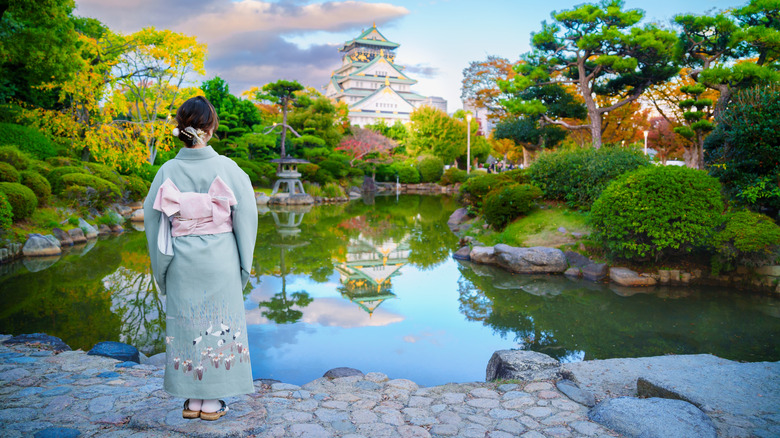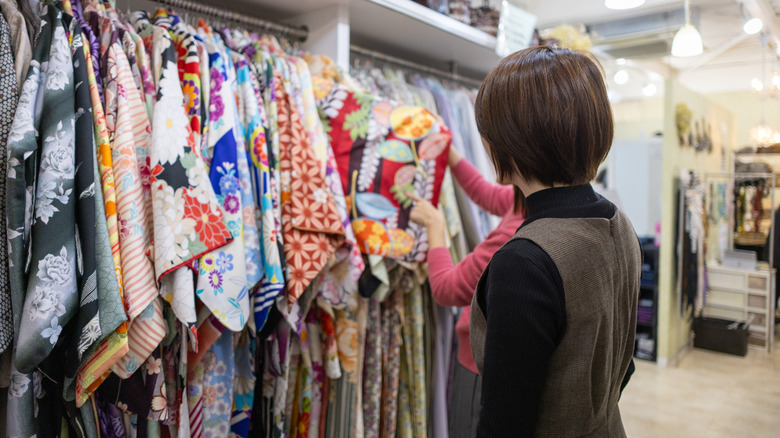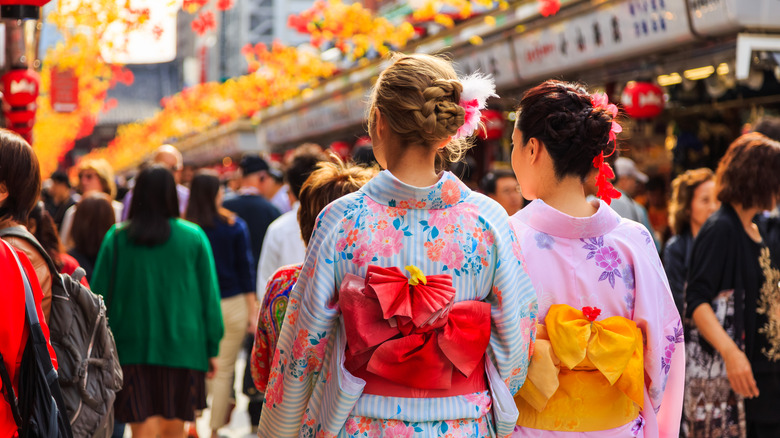There are few pieces of fashion as iconic as the Japanese kimono. These spectacular silk robes are beautiful and vibrant, just like the country itself. As a tourist in Japan, you may be tempted to adorn one of these traditional garments. But should you? The general consensus is that as long as you wear a kimono out of an appreciation of Japan’s culture and in a respectful manner, the locals will welcome it. “I can say it was a very positive experience for me,” one traveler recalls. “It was also lovely to engage with locals while wearing it. We got many smiles and even some bows while walking through Kyoto” (via The Navigatio). However, if you’re simply wearing a kimono so you can take thousands of selfies to get more likes on social media, you should think twice.
Japanese people typically wear these ankle-length robes only for special occasions such as weddings and festivals. The designs and patterns change depending on who is wearing them and what the season is. As an international traveler, kimonos are appropriate attire when attending a tea ceremony or visiting one of Japan’s many sacred Shinto shrines, such as Tokyo’s famous and revered Meiji Shrine. Moreover, kimonos are not just for women — they can be worn by men and children as well, creating a special memory for the whole family.
Tips on renting a kimono while visiting Japan
Tourists can rent a kimono for the day in most major cities within Japan. When researching where to find one, English speakers might want to look for shops that allow online bookings or reservations via email. It’s best to book a time slot in advance since the stores can get busy, particularly during peak travel seasons.
The cost of a kimono is as varied as the fabrics they’re made of. If you’re opting for a budget-friendly Japanese trip that won’t break the bank, you can rent one for as cheap as 3,000 yen ($20). Those who wish to splurge on a more luxurious experience with high-end accessories, hairstyling, and makeup might pay up to 30,000 yen ($200). Expect to spend at least an hour at the rental shop picking out your kimono and having a trained staffer dress you in it. “It truly was a process,” explains one traveler. “I had no idea a kimono had this many layers and parts to it. The folding techniques that were used were incredibly fascinating to look at.”
In addition to the robe itself, you will also pick out an obi, which is the decorative sash that wraps around your waist and ties in the back. The thin cord that keeps the obi in place is called an obijime. Your rental will also include the traditional split-toe socks called tabi and the thonged, wooden sandals called zōri. You’ll be able to leave your clothes and bags at the store since only small clutches or pouches are usually carried while wearing a kimono.




